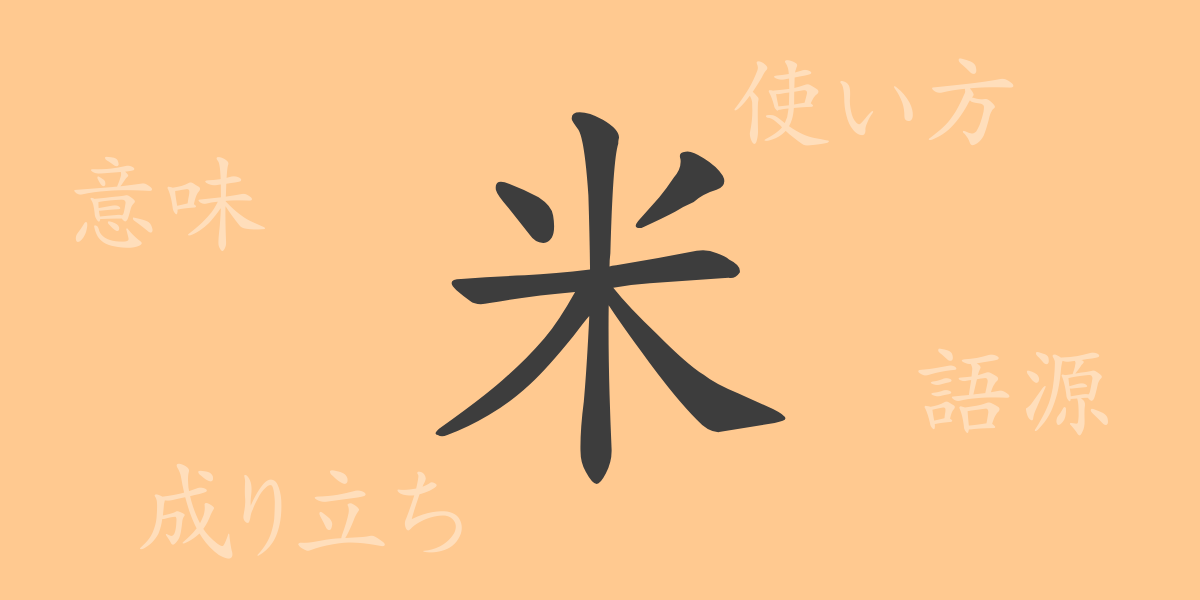In Japanese food culture, rice is more than just a staple food. This small grain has deeply rooted itself in the lives of the Japanese people throughout a long history, significantly influencing their culture and language. In this article, we will delve deeply into the origins of the 常用漢字 (jouyou kanji) “米” (kome), its meaning, usage, readings, idioms, and proverbs.
The Origins (語源, gogen) of 米 (kome)
Exploring the origins of the kanji “米” (kome), we find that its roots trace back to ancient China. “米” (kome) was originally a pictograph representing 籾 (momi), the husk that encloses rice grains. The shape of the husk is depicted in the character. Over time, this character came to signify polished white rice and was transmitted to Japan.
The Meaning and Usage of 米 (kome)
In Japan, the meaning of “米” (kome) primarily refers to the grain obtained from rice plants. However, it is not limited to this; it is also used to symbolize currency and nations. For example, “米ドル” (beidoru) refers to the US dollar, and “米国” (beikoku) is used to refer to the United States of America.
Readings, Stroke Count, and Radical of 米 (kome)
The kanji “米” (kome) has multiple readings in Japanese.
- Readings: In 音読み (on’yomi), it is “ベイ” (bei); in 訓読み (kun’yomi), it is “こめ” (kome) or “よね” (yone).
- Stroke count: 6 strokes in total.
- Radical: 米部 (こめへん, komehen).
Idioms, Proverbs, and Phrases Using 米 (kome)
There are numerous idioms, proverbs, and phrases in Japanese that include “米” (kome). Here are a few examples:
- 米寿 (beiju): A term used to celebrate the long life of 88 years. It comes from the fact that the character “米” (kome) can be broken down to read “八十八” (hachi-ju hachi).
- 米の飯 (kome no meshi): Also known as “ご飯” (gohan), it refers to cooked rice, the staple food of Japan.
- 米を洗う (kome wo arau): A metaphor for making futile efforts.
Conclusion on 米 (kome)
The meaning contained in a single kanji is like a mirror reflecting the culture and history of a nation. The character “米” (kome) holds value far beyond being just a food item for the Japanese people, playing a significant role in language and expression as well. We hope this article has helped readers appreciate the depth of the kanji “米” (kome).
“`

























